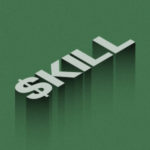Having money in your pocket is not the same as having it stored in a bank, let alone have it reversed. For example, consider this case: you have just received a large sum of money, and you have two options, first initial pay of a department, and secondly, to take that money to make a Europe tour.
In the first of those options is the desire to invest, make money, maybe in five or ten years, while the second satisfies a wish. Choosing one of the two options leads to a vital topic of finance: the opportunity cost.
This concept, applied in various fields of the economy, we are quite useful in the field of finance. After all, the opportunity cost is what we do or have done or invest in something that holds for us “probable” future satisfactions. And stress “probable” because no investment finance is one hundred percent safe. Theorizing the opportunity cost, assert, then, that is the difference between the values of the chosen action with respect to the value of the best alternative. The question that jumps to the view for a financier is the following: How much are you willing to stop enjoying something in the present to enjoy in the future?
In the business world can also observe pricks of what it means the opportunity cost. How can we see it from the outside? Here you will specify that the opportunity cost of investors and/or potential investors is the cost of capital of the company.
Externally it is observed through dividend payments, share value of companies (a higher monetary value, there is greater opportunity cost for investors, the expansion of capital, the payment of acquisition of other companies) and many other variations. As we can see, it is the opportunity cost, both in personal finance and business, a good compass for our future decisions.








